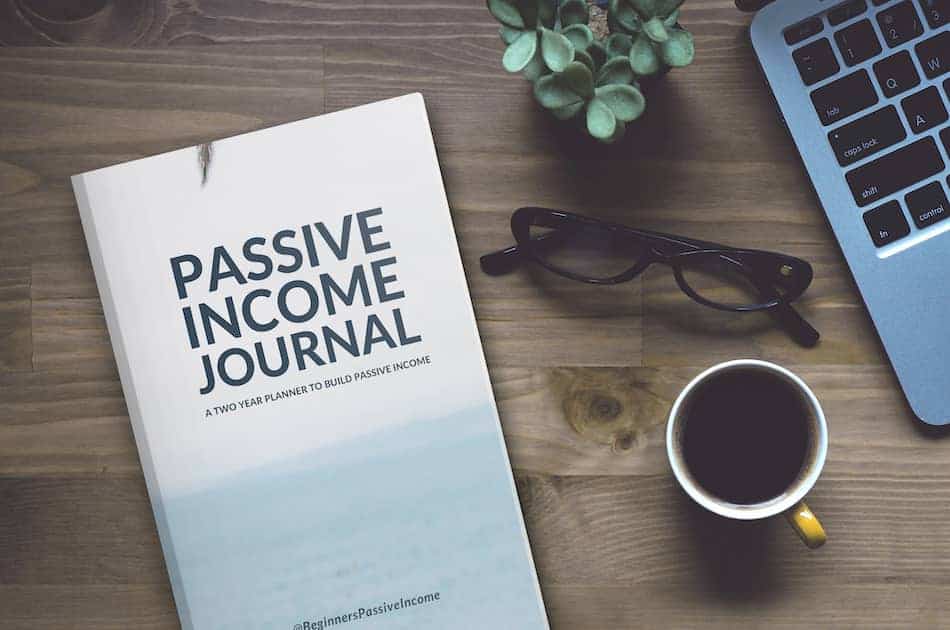One day I was thinking about the various ways that someone can achieve financial independence, and one method that stood out to me is the idea of passive income. Passive income is often the subject of great debate in personal finance. Some people love it and some people hate it, but I believe passive income is a viable way to reach financial independence.
So, how do you achieve financial independence with passive income? Financial independence can be achieved through passive income when the amount of monthly passive income is enough to meet your monthly spending requirements.
The less you need to spend each month, the less passive income you would require. Achieving financial independence through passive income is different than reaching financial independence in a traditional sense, so it is important to distinguish between the two.
Traditional Financial Independence
Typically when financial independence is discussed, it is referred to as having acquired enough net worth in assets (usually index funds) to where you can withdraw 4% or less of your net worth per year. This theory is based on the Trinity Study that was done in 1998 by three finance professors at Trinity University in San Antonio Texas. The study concluded that “If history is any guide for the future, then withdrawal rates of 3% and 4% are extremely unlikely to exhaust any portfolio of stocks and bonds during any of the payout periods shown in Table 1.”
Table 1 shows various asset allocations between stocks and bonds as well as various withdrawal rates anywhere from 3% to 12%. The table shows various lengths of retirement including 15, 20, 25, and 30 years. Most early retirees pay attention to the 30-year column. The table illustrates the “percentage of success” of a portfolio lasting for “x” amount of years from 1926 to 1995 based on different withdrawal rates and portfolio allocations.
The 1998 Trinity Study Concluded that with a 4% withdrawal rate;
A portfolio of 100% stocks and 0% bonds had a 98% chance of success after 30 years.
A portfolio of 75% stocks and 25% bonds had a 100% chance of success after 30 years.
A portfolio of 50% stocks and 50% bonds had a 100% chance of success after 30 years.
A portfolio of 25% stocks and 75% bonds had a 100% chance of success after 30 years.
A portfolio of 0% stocks and 100% bonds had a 100% chance of success after 30 years.

Now, the 4% withdrawal rule isn’t perfect. For one, all of these portfolios would have experienced drastically different ups and downs during the lifetime (known as volatility), and we all have different risk tolerances that need to be accounted for. Another thing is that “success” would only mean that the portfolio has not been depleted. For example, $1 left at the end of thirty years is still a “success”.
Additionally, a lot has changed since the 90s. Most notably interest rates, the tech bubble in the early 2000s, and the great recession in the late 2000s, early 2010s. Gratefully, A retirement researcher known as Wade Pfau has updated the results for 2018. He even added a 40-year retirement to the column, which is even better for early retirees.
The updated 2018 study concluded that with a 4% withdrawal rate;
A portfolio of 100% stocks and 0% bonds had an 89% chance of success after 40 years.
A portfolio of 75% stocks and 25% bonds had a 92% chance of success after 40 years.
A portfolio of 50% stocks and 50% bonds had an 87% chance of success after 40 years.
A portfolio of 25% stocks and 75% bonds had a 45% chance of success after 40 years.
A portfolio of 0% stocks and 100% bonds had an 11% chance of success after 40 years.
Not as good as the 30 Year projections in the 90s, but still pretty darn good. A very moderate 50/50 mix of stocks and bonds have had an 87% chance of success in a 40-year retirement. Keep in mind that the study assumes no other income will ever be made in your life, which is pretty unlikely for early retirees.

If you spend $40,000 per year then you would need approximately $1,000,000 in assets according to the 4% rule. It can also be calculated by multiplying your annual spending by 25 ($40,000 x 25 = $1,000,000). You can do this calculation with any amount of desired annual spending very easily. You could also put the 4% rule to the test using a very advanced calculator known as FIRECalc.
So now you should be able to see why traditional financial independence typically relies on a 4% safe withdrawal rule and a well-diversified portfolio of stocks and bonds. If you are seeking to achieve traditional financial independence building a strong financial security in your life is an excellent way to do so.
Achieving such a large amount of wealth is primarily done by being frugal and consistently investing over some time. However, this isn’t the only way to achieve financial independence. By simply replacing your spending with passive income you could achieve financial independence more quickly.
Financial Independence Through Passive Income
Achieving financial independence through passive income is a little bit simpler in terms of calculation. It’s not based on any studies, but it is logical in theory. If you can produce enough monthly passive income that covers your monthly spending then you do not need to work for a living. Instead, your various passive income streams provide for you.
The simple calculation is: (monthly spending = passive income goal). There are two primary ways that you can achieve these goals. You can either increase your monthly income from passive income sources, or you can reduce your monthly spending. Hopefully, you do both since that is the most efficient way to go about it.
Just like how diversifying your investments is important for early retirement, diversifying your passive income streams is important to reduce risk. If one passive income stream “dries up” then you want to be able to increase revenue from another source or create a new one that fills the gap.
Since you are relying on monthly passive income, you would ideally have an emergency fund large enough to cover your expenses if a larger income stream is no longer producing. Therefore, to your passive income goal, you can also add amounts you would like to save or reinvest (so for example monthly spending + monthly investing goal = passive income goal). You would also want to have your passive income produce more than your bare minimum expenses for that same reason.
Passive Income Ideas for Financial Independence
Investing can be one of the most passive ways to achieve income streams that require no active work or involvement on your part. Some of the ways that you can make passive income from these investments are from interest or dividends.
1. Financial Instruments
Interest is money paid to you for the use of the money you lent to the borrower. The borrower can be anyone from a single individual, to a business, all the way up to the federal government. Dividends are a payment from a company that you own. The company is typically sharing its profits with the owners (or investors).
Index Funds
Index funds are a favorite of mine and a favorite of many people in the financial independence space. Index funds are mutual funds that track an index of the market. They can be any market with equities, bonds, real estate, etc. Index funds are awesome because they allow individual investors to broadly diversify their assets while keeping expenses extremely low because there is no active mutual fund manager needed. They also tend to outperform most active mutual funds over time.
Dividend Index Funds
One type of index fund that can be especially useful for those that are seeking passive income is an index fund that primarily invests in dividend stocks. Dividend stocks are companies that historically have reliably paid large amounts of dividends to its shareholders. These kinds of companies are typically good at holding up in a time of recession. For this reason, they are known as “defensive” sectors. Defensive industries usually include utilities, telecommunications, food retail, and healthcare.
Bond Index Funds
Another index fund that is useful for passive income is a bond based index fund. Bonds are IOUs usually issued by a company or government entity. Most of them pay a fixed amount of interest throughout their life until they “mature” and you redeem your principal. A bond index fund can help investors easily diversify who they hold bonds from and their varying lengths and interest rates. Bonds historically offer less return than stocks, but they also offer less volatility than stocks.
Exchange-Traded Funds
Exchange-Traded Funds or ETFs are a relatively new type of market security introduced in the early 90s. ETFs are basically like a mutual fund that trades like an individual stock. Much like a mutual fund they can track a market index and therefore can have very low ongoing fees.
2. Real Estate
Real estate provides many opportunities from rental properties, to REITs and short term rentals (like those provided on Airbnb).
Rental Properties
Rental properties can come in many shapes and sizes from single-family homes, small multifamilies, apartment complexes, or other commercial rentals, just to name a few. There are also many other creative rental properties like mobile home parks and campgrounds. Whatever your rental real estate interests may be, the name of the game is about generating positive cash flow.
Some of the biggest advantages of real estate are its stability, tax advantages, and use of leverage. Not to mention that it is also a tangible asset. You can see, touch, and feel real estate and some people just like that about it as an investment. Real estate is an investment where you can use low cost borrowed funds to create passive income for yourself.
Real estate rentals can be very passive or active depending on how much you want to be involved. Sometimes , the more you involve yourself the more profit you can make, but it isn’t always the case. If you want your rental real estate to be completely passive then you would need to hire professional property management. Either way, some advanced calculations would need to be done to ensure that a property can produce a positive income stream for you.
Real Estate Investment Trusts (REITs)
REITs are companies that operate rental properties. You can buy their funds on normal stock exchanges. In some way, they are like a mutual fund that holds real estate. They provide high yield dividends because they pass through profits from rentals to the owners of the trust. REITs can be an easy way to diversify in real estate across many different kinds of properties.
Airbnb

Airbnb itself is a relatively new passive income opportunity, but the idea of short term vacation rentals have been around for a long time. Airbnb takes more involvement to manage if you are going to be running it yourself. However, many Airbnb landlords use automatic lock boxes to automate arrivals and departures, and hire out most tasks to property managers or cleaners. Depending on the location of where you are renting out, Airbnb can have a high-profit margin since short term rentals can demand higher per day rents. Another fascinating concept of Airbnb is that you can get creative with what you rent out. It can be an entire house, a single room, or sometimes just a couch.
Learn More About Airbnb as a Passive Income Source
3. Passive Businesses
Owning a business is a ton of work, no doubt about that, but some businesses can be way more passive than others. Owning a passive income business can be the primary source of your income streams because they can have high-profit margins, especially if you can buy the business in distress. However, the business needs to be setup to be passive, otherwise you will be continually tied to daily operations. Learn more about how to make each of these business ideas more passive by clicking on the image or orange button. Here are some ideas for passive businesses:
Vending Machines
Think of the business model of a vending machine. The only work required is stocking, taking the money out, and occasional servicing. All of these tasks can be hired out to someone else and make it completely passive on your part. Many newer vending machines are accepting payment by card, which makes it even easier to make a profit. The small snacks found in vending machines are marked up exponentially due to convenience.
Laundromats

Owning and operating a laundromat can be a great passive business because once you have the machines in place, they can continue to bring in income for a long time. Management and operations can be hired out easily. For the most part, the business only requires taking the money out, servicing the machines, and keeping the place clean. Laundromats usually have a loyal customer base that will continue to bring in income for the owner over time.
Learn More About Laundromats as a Passive Income Source
Car Washes

Car washes that either wash cars automatically or provide a means for people to wash their cars themselves can be a great passive business. This business usually doesn’t require any day to day management. The business only needs occasional servicing of the equipment and removal of the money.
Learn More About Car Washes as a Passive Income Source
3. Websites

Owning and operating a website can be an amazing business that can make you income while you sleep. It is a business that does not require very many upfront or ongoing costs. You can operate your business pretty much anywhere you have an internet connection. There are tons of ways to make money online, and some ways are more passive than others.
Learn More About Websites as a Passive Income Source
4. Create a Product
Products can be a viable source of passive income because once you have the product created, you could hire out the manufacturing and distribution of the product. Better yet, you can create intangible products that can be distributed completely over the internet without any manufacturing or physical distribution required. These products are commonly known as “information products” and they can be a serious revenue stream if there is a demand for your product.
Online Course
An online course seeks to sell information and knowledge to someone that needs it. It can come in many different formats such as video, audio, written, etc. There must be a demand for the product for it to produce any income for you. Typically this involves good marketing strategies in some way or another.
eBooks

E-books are books that do not require publishing and printing because they stay in a digital format that can easily be created online. The same rules apply to online courses because there must be a demand for the type of e-book that you create. Come creative marketing and customer focus is usually the best way to get sales of an e-book.
Learn More About eBooks as a Passive Income Source
Apps
Applications serve many purposes and there are many ways that they can provide you with an income. Some apps make money purely from advertisements. Others charge a one time fee for a premium version. A few have monthly ongoing fees for continued usage of some premium features. If you have a good idea for an app, you can hire a developer and sell the app either to another company or to users on an app marketplace.
How to Track Your Progress
The best way to track your progress towards achieving financial independence with passive income is to think of it as a percentage of your monthly expenses. For example, if you spend $5,000 per month and you currently have $1,500 per month coming from passive income streams then you are 30% ($1,500 / $5,000 = 0.3) of the way there.
You can recalculate your progress at a specified time interval such as every month, every quarter, semi-annually, or annually. If that percentage is getting bigger then you are making positive progress. If that percentage is getting smaller then you need to re-evaluate things. If your expenses are increasing then it can eat away at your progress. At the same time, if your passive income is shrinking then it can also make that percentage smaller.

Increase this percentage to 100% and you would then be considered financially independent via passive income. Don’t stop there, if you can increase your passive income even further and build wealth and more financial security, then continue doing so! You can set goals and track your progress in Beginners Passive Income’s Passive Income Journal,” check it out here.
Passive Income Journal
Be Careful With Taxes
One thing that you need to keep in mind with passive income that it is, like any other income, taxable. This is because passive income is income that you “realize” each month, year, etc. Sometimes it is taxed differently depending on where the money comes from. You will need to consult a qualified accountant or other tax professional in your area to ensure that you correctly file your taxes.
The source of passive income will determine how it will be taxed. If you own a passive business and work for it as an employee, then your “wages” will most likely be taxed as earned income like a regular W-2 employee. If the business is a separate entity then it may pay its taxes separately depending on what kind of tax entity the business falls under.
Some financial instruments have historically been taxed differently than earned income when it comes to “long term capital gains” and “qualified dividends”. The U.S. tax code is pretty complicated, so you must consult a professional and educate yourself on tax matters since your income streams may all have different ways they are taxed. A certified tax specialist of your choice can help you legally pay as little taxes as possible.
How “Passive” is Passive Income?
It is important to understand that passive income comes in different levels of “passiveness”. When you are not actively trading your time for money, then a source of income could be considered passive. A financial instrument that pays interest or dividends can be considered extremely passive. It doesn’t get much more passive than interest on a bond or dividends from stock. The only action on your part is to purchase the instrument and then collect your payments.
On the other hand, real estate rentals can be very passive or very active, it just depends. If you are self-managing a property with a needy tenant then they could take up a lot of your time in exchange for rent. If you are self-managing and your tenant rarely needs anything then it can be pretty passive. Alternatively, if you hire a professional property management company that takes care of everything, then the rental real estate could be extremely passive to you.
Passiveness is just something you need to keep in mind when it comes to your income streams. Typically, the more passive the income stream is, the less return you will get from it. This isn’t always the case, but referring back to the real estate example above, hiring property management makes the property very passive, but they also cost money. That money is deducted from your rental income stream. The overall goal here is to find a balance of how passive you want your income to be and how much you need from each income stream. Learn more about making a business more passive in this article.
Related Questions
How can I Invest in Index Funds? Investing in index funds is really simple and easy for anyone to do, even beginners. Most workplace 401(k)s already have index funds included in the investment options. Contact your workplace Human Resources for more information on what types of securities are included in your 401(k) plan. Alternatively, you could open up an account with an online discount brokerage company such as Fidelity, Vanguard, Charles Schwab, E-trade, etc. These brokerage companies are more than happy to assist you in getting started with investing in index funds. Contact a certified financial planner in your area to ensure to get the right advice for your specific situation and goals.
What are the Benefits of Becoming Financially Independent? Financial independence comes with a wide array of benefits. One of the biggest and most sought after benefits of financial independence is financial security. Financial independence provides immense financial security compared to relying on one job (one single source of income). No job is completely safe from disappearing, and therefore it is up to you to provide yourself and your family with financial security. If you are curious to learn more about the benefits of financial independence, then click here to explore 8 amazing benefits of financial independence.

Zach Smith | Financial Independence
Zach is passionate about personal finance, especially when it comes to financial independence. He is a heavy index fund investor and budget connoisseur that also loves traveling, exercise, and the great outdoors. See his full bio here.










Leave a Comment